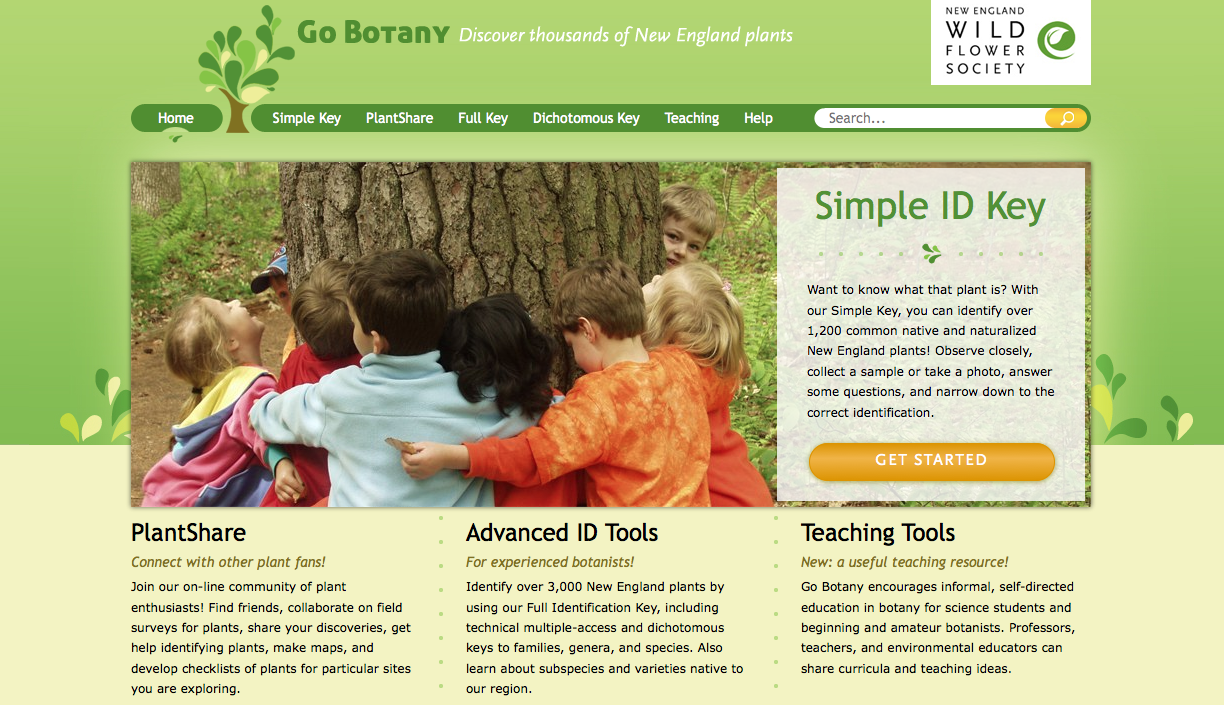Go Botany
- Project Type:
- Non-Profit, Education
- Client:
- Native Plant Trust
- Location:
- Framingham, Massachusetts
- Technology:
- Django
An award winning, open source, next-generation field guide developed with NSF funding
Jazkarta staff were amazingly knowledgeable, they did extra research to come up with innovative identification algorithms and have continued working with us on Go Botany updates. They are intelligent, insightful, and absolutely wonderful to work with. We recommended them highly to the Smithsonian Institution for the follow-on "Go Orchids" project.
Services
Web ApplicationsAutomated Cloud Deployments
Empowering Scientists
Design Credit
Fresh Tilled Soil

In 2009 the Native Plant Trust (then New England Wild Flower Society) was awarded an NSF grant to develop an innovative online field guide to all 3,500 species of New England plants - the first comprehensive update of our knowledge of the region’s plants in 25 years. This multi-year project had many deliverables, but the overarching goal was to develop radical new web-based tools to teach botany and plant identification to a whole new generation of citizen scientists. Tools to pique their curiosity, spur their learning, and engage them, through their fascination with technology, to go outside and grow their fascination with the natural world.
Because of our unique knowledge of both technology and botany, Jazkarta was engaged to lead the development effort. There were a lot of ideas to sort out so we began with a discovery process. We gathered and prioritized requirements using brainstorming techniques, and these formed the basis of user stories. We also defined the technology platform we would use: Django, PostgreSQL with PostGIS, Solr, and the Dojo Javascript toolkit. Then we began implementation with the most technically challenging part of the project: the database of botanical information that would drive all the Go Botany tools and an API wrapper around it optimized for the kinds of queries that would be required. Once this foundation was solid, we implemented the "simple key" - an interactive plant identification tool that both novices and experts can use. Designing the user interface for this tool was another big challenge, so we worked alongside a user experience designer - Matt Belge of Visionlogic.com. By using all the tools of the UX trade, Matt was able to produce coherent wireframes for successive bits of Simple Key functionality which we then figured out how to implement.
We finished the simple key in 2010 but a lot of work remained before the tool launched in 2012. Botanical data specialists did a massive amount of data entry, image collectors gathered thousands of photographs, botanists developed technical descriptions, staff created videos, help pages, an illustrated glossary, and lots of other content, and a web design firm, Fresh Tilled Soil, was hired to create the graphic design. The final web application offers several plant identification tools, extensive photographs and information about the region's plants, learning aids for students and teachers, and a social feature called PlantShare that stimulates learning and discussion. The project won the 2013 Maria Pirie Environmental Education Program Award.
In keeping with public funding of the app, all the code is open source. For more in-depth information about the project, see our Go Botany! blog post.

